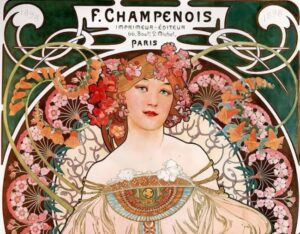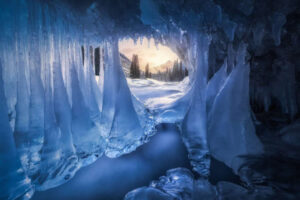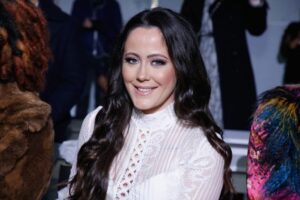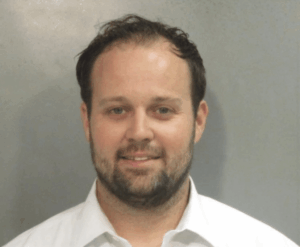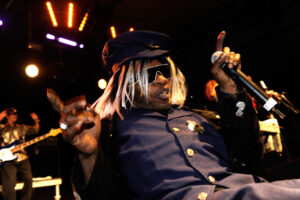A New Art Fair, Arrival, Ditches the Basel Frenzy for the Berkshires’ Calm
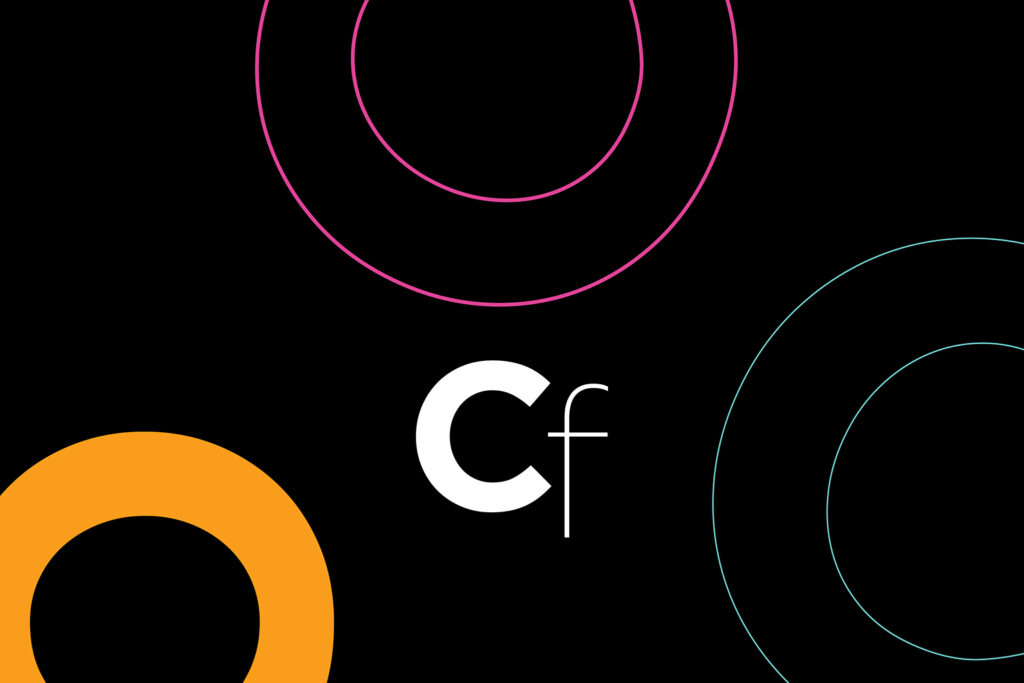
Editor’s Note: This story is part of Newsmakers, a series where we interview the movers and shakers who are making change in the art world.
The idea for Arrival Art Fair was hatched, like many good ideas, in frustration. After a recent deflating visit to a “sterile and lame” fair, Sarah Galender Meyer, Yng-Ru Chen, and Crystalle Lacouture decided that they could do better. Friends with deep backgrounds as an advisor, founder of Massachusetts gallery Praise Shadows, and artist respectively, the trio set their sights on the Berkshires, the lush, museum-rich corner of Massachusetts where Mass MoCA and the Clark Art Institute anchor a thriving institutional art ecosystem.
The result is a biannual, invitation-only fair hosted at Tourists, a beloved hotel in North Adams. Set to open with a VIP preview on Thursday and running through the weekend, the fair features just 36 exhibitors selected through a nomination process driven by curators with deep regional ties. Participating galleries include New York stalwarts Jane Lombard and Sears Peyton Gallery, but also Jessica Silverman form San Fransisco, Cleveland’s Abattoir Gallery, and Wolfgang Gallery from Atlanta.
Arrival offers an alternative model to the transactional frenzy that has come to define much of the fair circuit. In line with recent efforts to mingle art with leisure, as at, say, Hauser & Wirth’s ever-expanding hospitality venture Artfarm, Galender Meyer, Chen, and Lacouture imagine Arrival as a weekend getaway experience. The fair has bought out the entire hotel for the event and curated several days of programming that includes outdoor sculpture, museum talks, and even an acquisition prize from the Williams College Museum of Art. The funding model is unconventional too, with booth fees supplemented by philanthropic support, keeping the fair free for visitors.
Galender Meyer, Chen, and Lacouture spoke with ARTnews over video-chat to discuss their vision for Arrival, the art world’s hospitality pivot, and what makes North Adams the right place to rethink the fair model.
ARTNews: Why start a new fair now?
Sarah Galender Meyer: Why not? Honestly, it came out of a shared experience we had at another fair—one that just felt sterile and uninspired. There wasn’t enough context for the galleries or support for the audience. Not that art fairs have to be precious, but there was something missing. It felt unsatisfying from every angle—as an exhibitor, a collector, and an artist. We thought, we can do better.
You know, you have to tell me which fair it was…
Yng Ru Chen: No, sir. Nice try but we’re too discrete to name the fair. [Laughs]
Lacouture: It would be uncivilized, wouldn’t it.
Galender Meyer: But seriously, we wanted something different. The Berkshires made sense—it’s beautiful in the summer, we all have ties to the region, and it’s a place where art already thrives, but doesn’t get overwhelmed. We saw the chance to create a fair that’s rigorous but also offers real experiences: dialogue, nature, museums. It’s a more well-rounded weekend for everyone — gallerists, collectors, and visitors.
Chen: And this is a part of the world where art isn’t just an add-on; it’s embedded. You’ve got Mass MoCA, the Clark, Williams College—it’s an area that’s long supported serious art audiences.
What was the process of bringing Arrival to life? Was it as idyllic as it sounds?
Lacouture: [Laughs] It was one foot in front of the other. We each bring different perspectives — advisor, gallerist, artist—and different experiences with fairs. That made the collaboration rich. We didn’t sit down and map out a five-year plan; it was more like: look at spaces, think of a name, incorporate, little by little. And momentum met the work.
Galender Meyer: And a lot of learning as we went. Everything from social media to lining up curatorial ambassadors—it’s all new for us. But we really trusted each other’s instincts. No one tried to dominate.
Chen: We all had enough fair experience—from the dealer side, from the artist side, from the collector side—to know what didn’t work. That helped us focus on what we wanted to create.
Why the Tourists hotel? Was it always the plan to use a hotel?
Lacouture: I have a personal connection to Tourists. My husband was one of the original founders, and I curated there when it first opened. It’s not just a hotel—it’s a property that’s really plugged into the community. And it’s designed in a way that makes sense for what we wanted: the rooms are separate, more like a motel, so it feels natural for galleries to take over individual spaces.
Chen: We actually looked at a few other spaces first. Some were cool, but not climate-controlled, and that was a dealbreaker. Once Tourists was on the table, it felt obvious. We bought out the entire hotel for the fair — every room, every public space. It completely changes the energy. You’re not just walking rows of booths. You’re moving through a landscape.
It sounds like you’re building more than just a fair—more like a destination weekend.
Galender Meyer: Exactly. It’s a full weekend — the natural beauty, the museums, the food. We have a chef-in-residence, Cultured‘s food editor-at-large Mina Stone, a DJ in residence, April Hunt. We’re creating something that feels holistic. Not just a place to transact, but a place to experience.
Lacouture: Hospitality is a huge part of it. We want people to have conversations, meet new people, relax. Not the high-pressure, fast-paced fair where everyone’s racing through with a checklist. We want them to think about what they’ve seen, not just what they’ve bought.
Chen: And honestly, collectors are ready for that. There’s less of the rat race now—less of the sprint to buy in the first two hours. People want to take their time.
Galender Meyer: Plus, we’re integrating the local arts community into it, not just parachuting in for a weekend. That’s important to us.
Tell me about the selection process for exhibitors.
Chen: We assembled a group of curatorial ambassadors, people who know the region deeply. Directors and curators from places like Mass MoCA, the Clark, [Williams College Museum of Art], Storm King [Art Center in upstate New York], the Aldrich [Contemporary Art Museum in Connecticut]. They each nominated three to five galleries, and from that pool, we extended invitations.
Lacouture: Some said no, either because they were already committed to Basel or because they didn’t want to take a chance on a new fair. But many said yes. And the mix is exciting: galleries from Detroit, Austin, San Francisco, Los Angeles. It’s not just the usual suspects from New York.
Galender Meyer: And it’s a new access point for them. There’s a real community of collectors and curators in the Berkshires, but also the Hudson Valley, Boston, Connecticut. They’re going to meet new people, have different conversations.
You’ve also attracted exhibitors and artists who typically don’t participate in fairs. How did that come together?
Chen: That’s something we’re really excited about. We have artists and galleries who don’t usually engage with the fair circuit. For example, Fabiola Jean-Louis, who just had a solo exhibition at the Isabella Stewart Gardner Museum [in Boston], will have work at Arrival through Wolfgang Gallery in Atlanta. They’re bringing pieces directly from her museum show to the fair.
Lacouture: Another example is Mel Chin. His work will be shown by Davila-Villa Stothart, who primarily manage estates and typically don’t do fairs. They’re installing one of his iconic 1992 vending machine pieces—vending machine stocked with objects designed to look like American flags and junk food, a sharp commentary on consumer culture. It’s the kind of thoughtful installation you don’t often encounter at a typical fair.
Chen: These are the kinds of projects that don’t always fit into the traditional fair model. But because Arrival is structured differently—slower pace, museum audiences, curators on-site—it creates a space where artists and exhibitors feel comfortable presenting more ambitious or unusual work.
The fair is biannual — not the typical model. Why?
Galender Meyer: It fits our ethos. Slow down. Don’t rush. Do it right. We’ll be back in 2027, and we’ll have a fresh set of curatorial ambassadors and exhibitors.
Chen: Plus, North Adams has a history of big, biennial events — Solid Sound at Mass MoCA, for instance. The community gets it. They know how to host something that draws people in and leaves a mark.
And admission is free — how are you making that work?
Chen: The funding model is different. We started with our own sweat equity. No backers, no big investors. Booth fees, yes, but also philanthropic support from collectors who believe in what we’re doing. That’s what allows us to keep it free and accessible.
Lacouture: It’s not just about selling tickets. It’s about building something that feels sustainable, and not beholden to private equity.
Anything else people should know?
Chen: Arrival is independent by design. Exhibitors will feel that. Visitors will feel that. It’s a different way of thinking about what an art fair can be.
Lacouture: And we hope they sit by the pool and feel it too.

